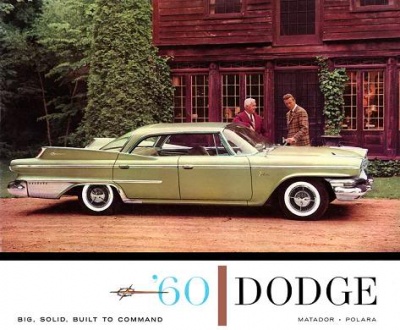Dodge Polara
Contents
Background:
The Dodge Polara was introduced in 1960 as Dodge's top-of-the-line full-size car; after the introduction of the Dodge Custom 880 in 1962, the Polara nameplate designated a step below the full sized best trimmed Dodge model; the Polara that year was downsized to intermediate status. In its various forms, the Polara name was used by Dodge until 1973, when its position in Dodge's line-up was replaced by the Dodge Monaco. The name Polara is a reference to the Polaris star, in a marketing attempt to appeal to the excitement surrounding the Space Race during the early 1960s. The Polara was a competitor to the Ford Galaxie 500 and the Chevrolet Impala.
1960 marked the first year that all Chrysler models, save the Imperial, used unibody construction
This Wiki is Under Construction, and can use your help!
Please take a moment to add any information you might have on this topic. It is through this type of Member collaboration that the MoparWiki will grow into being the Ultimate Mopar Infobase. The links contained in the Understanding Wikis box in the sidebar can help you get started.
History:
Polara rode on the 122-inch (3,099 mm) wheelbase and was available as a 2-door convertible, 2-door hardtop coupe, 4-door hardtop sedan, 4-door hardtop station wagon, and conventional (pillared) 4-door sedan. Polaras also received more trim on the outside of the car, most notably a chrome stone guard aft of the rear wheel housings, a full-length chrome spear, and a wide chrome base to the chrome spear atop the headlight housings.In 1961, Dodge dropped the Matador, leaving the Polara as the sole "senior" Dodge model,reversing the car’s fins, making them taller as they flowed toward the rear window.Up front, the massive bumper treatments that had been a Dodge hallmark since 1957 were replaced with a simple bar design, above which was a massive concave grille shared with the Dodge Dart. There were 4 generations of the Polara.
